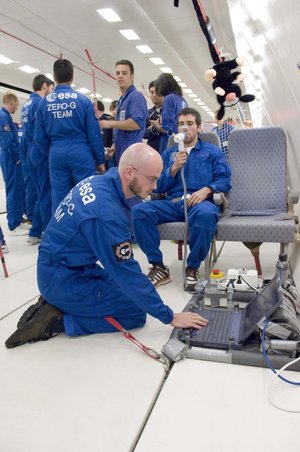Technical constraints
In order to be selected, applicants should comply with technical and safety criteria, among others. The following list shows the most common hazards and technical limitations that students should take into account while defining their projects.
- No potentially highly energetic or dangerous experiment will be accepted. Requirements include: no toxic, radioactive, extremely flammable or explosive products; no extreme temperatures (liquid: max 49°C, material: max 60°C); limited pressure and volume (pressure x volume < 4 bar.litres); no extreme magnetic fields, high voltage or high electrical power.
- The experiment mass should be as limited as possible, and should not exceed 75kg.
- The mass of free floating modules should be limited to 10kg, and restrains (tethers) to limit uncontrolled movement should be foreseen.
- The whole liquid quantity within an experiment should remain within half a litre, and double sealed containers should be used.
- The experiments should not take up an area of more than 2 x 2 m2 approximately.
- The set up of all electrical equipment (including all connectors and wiring) should be carried out by a professional electrician.
- The mechanical set up should be prepared by a professional workshop technician.
- In the case of biomedical experiments with human test subjects, the students shall only make use of the material and technical procedures which they are qualified for. As a consequence, either one of the students or the endorsing professor must be a qualified doctor or nurse. It is important to note that the use of any invasive technique will not be accepted.
For more information regarding these aspects, please refer to the Novespace document “Introductory Note” that can be found under the How to apply section.
Please note that the conditions detailed above are subject to change without prior notice.





